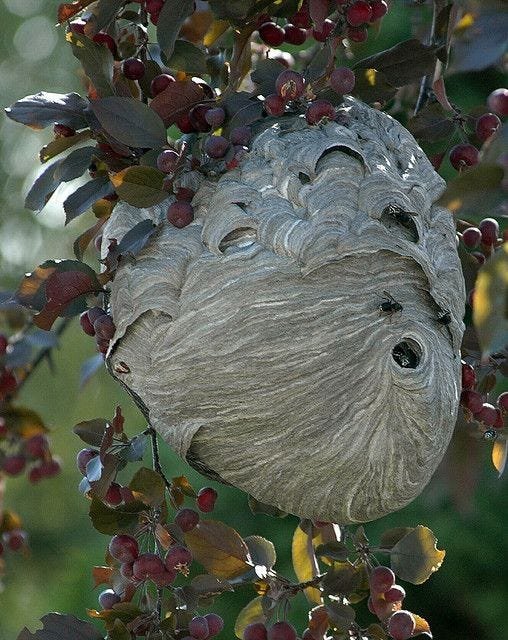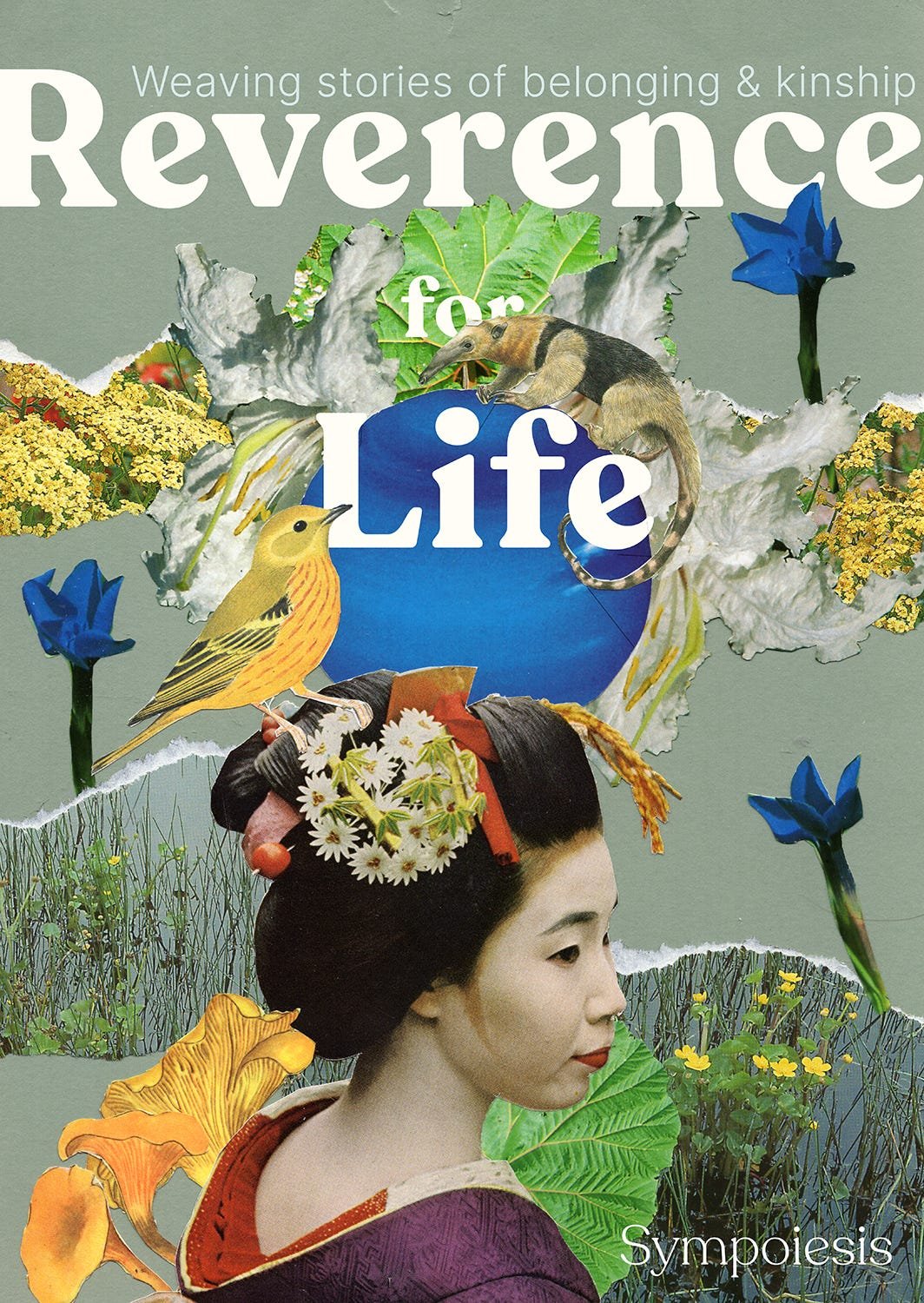Populating with Pollinators
This publication was first published in our Substack newsletter here.
“I am aware of some of the tragic repercussions of the chemical fight against insects taking place in France and elsewhere, and I deplore them. Modern man no longer knows how to foresee or to forestall. He will end by destroying the earth from which he and other living creatures draw their food. Poor bees, poor birds, poor men…”
Encountering an unexpected wasp nest can shake up your reality. They are beautiful constructions that look like an alien metropolis. But have you ever seen what they look like from the inside?
Wasp nests consist of a series of hexagonal cells arranged in layers, much like the sections of a beehive. Each cell is made from a paper-like material that the wasps create by chewing wood and mixing it with saliva. The cells are used for various purposes, such as raising and protecting the developing larvae, storing food, and providing shelter for the colony members. As wasps build new cells, they leave small spaces between them that allow air to flow through the nest. The hexagonal shapes optimize for space efficiency. I’m left pondering how we could take inspiration from wasps in how we go about designing our own spaces.
A few weeks ago, we were amazed to find a wasp nest attached to a water pipe below the roof of our house. Wasps and bees love building nests under roof overhangs, wooden sheds, or other sheltered areas because they provide easy access and shelter from the weather.
During the hottest day of the week, Rūta put out a few insect drinking stations with water and fresh fruit mixes, attracting many pollinators like bees and wasps. It was beautiful to witness them all sitting on the edges of candleholders and plant saucers, co-existing peacefully as if they were lounging at the spa. When we think about multi-species design, we often imagine plant-covered buildings and green urban corridors, but small interventions like these don’t cost anything and really make a difference during the heat wave.
But soon, everything changed. A few days later, our landlord called a specialist to come take away the wasp nest. Apparently, our neighbor didn’t feel comfortable in the presence of this alien configuration, suspended in front of her kitchen window. We were told that they would come to collect the nest and relocate it to a nearby forest or meadow. In Germany, after all, you are legally not allowed to kill wasps since they are essential pollinators and a crucial member of the ecosystem. On top of that, they eat tiny insects like mosquitos, which are omnipresent in this swampy area on the outskirts of Berlin. In fact, mosquitos are part of the very reason why the wasps build their nests here.
The specialist, however, disregarded the law meant to safeguard these species. Instead, he used a chemical spray to coax the wasps into the hive. Once they were too afraid and paralyzed to leave, he sprayed the whole nest, burning it down entirely. The job was done and his salary secured. In the aftermath, the surviving wasps flew around the house in confusion for hours, trying to retrieve their home. Yet all that was left were the remnants of the nest and a few blackened bodies of their peers.
The remnants of the wasp nest we found
We were expecting a peaceful relocation, not a brutal extermination. We were truly sad and deeply disappointed by how we systemize and socially accept violence against fellow species — and in this way, against ourselves.
Why is it that we allow the destruction of life under the name of annoyance and inconvenience? When did it become normalized to choose short-term comfort over long-term systemic health? When did personal convenience become a social convention?
Over time, we have gotten divorced from nature and as a result, from the beauty and wisdom embodied in its countless manifestations. We have simply lost the ecological knowledge and the ways to live it with intention and conscious awareness. I’m not talking about theoretical philosophy here but about practical everyday living. Even today, many still believe that wasps don’t “serve a specific function” like, for example, bees do. While this is outright false since wasps are important pollinators, that framing in itself is part of the problem. For one, if they wouldn’t serve an ecosystemic function, they simply wouldn’t be here. A species evolves when it excels in a specific ecological niche. Secondly, we get into really dangerous moral territory once we begin to determine someone’s right to live by the yardstick of utility. That’s when we create categories to devalue each other and start to see someone as lesser-than, whether that category is defined by a human race or the degree of indigeneity of a species. It’s how we justify and rationalize our actions that deeply harm life.
We Europeans pride ourselves on thousands of years of dialectic discourse and moral philosophy, but the intrinsic rights of animals and other non-human species have largely been disregarded until fairly recently. I am reminded of a quote by the wonderful polymath Albert Schweitzer, who in his seminal work argued that there simply is no morality without what he called Reverence for Life: “I cannot but have reverence for all that is called life. I cannot avoid compassion for everything that is called life. That is the beginning and foundation of morality.” To Schweitzer, Reverence for Life is not a line of poetry, but an embodied moral philosophy rooted in a profound sense of love and compassion for all living beings that acts as his North Star. “A man is really ethical only”, he wrote, “when he obeys the constraint laid on him to aid all life which he is able to help, and when he goes out of his way to avoid injuring anything living. He does not ask how far this or that life deserves sympathy as valuable in itself, nor how far it is capable of feeling. To him life as such is sacred.” To exist ethically, our reverence and respect for life aren’t reserved for any select species, but for all life. The entire living cosmos is sacred and worthy of our devotion and care.
When I first read his writing, my heart opened and a shiver ran down my spine. Here is a white, middle-aged German philosopher living at the turn of the 20th century who dedicated his career to writing love expressions to the Earth.
We were left pondering how we, descendants of modernity — with its fixation on progress and urgency, culturally stuck within the archetype of the anthropocentric hero— can once again unite as beings of place(s), participating in the grand unfolding of this multiplicity of beingness we call life.



